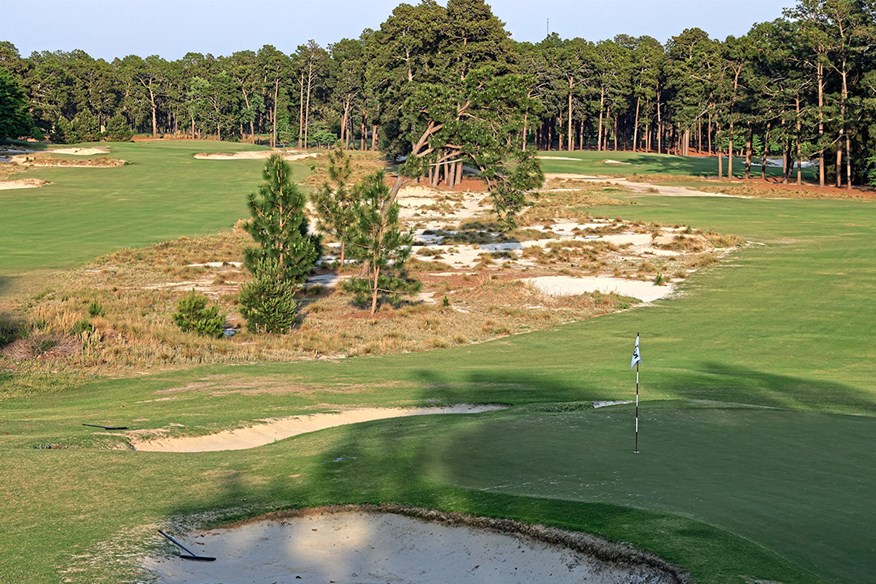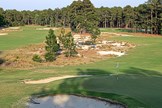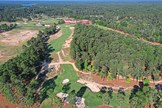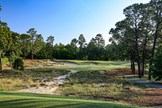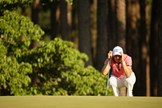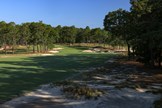The pitfalls of Pinehurst: What to expect from the revered course No.2 at the US Open
Last updated:
The absence of thick rough and tight fairways means Pinehurst No.2 will present an unfamiliar test for the 124th US Open.
Emerald-green grass. Five inches of club-tangling rough. Single-file fairways. We all have that image of an archetypal US Open course, but it almost certainly looks nothing like this. Pinehurst No.2 is a glorious anomaly and perhaps the only tree-lined course where rough and water are not even a factor.
The fairways are supersized, by US Open standards, and bleed into sandy scrub with copper-colored wire grass poking out. The greens sit like upturned saucers and shed balls several feet below.
Where you end up is all part of the fun. Sometimes in sand, often in a tightly-mown collection area which blurs the line between which Open Championship this actually is. It makes for a special kind of test for a US Open and one that feels long overdue after a 10-year wait.
With this in mind, we asked a variety of experts what we can expect from one of America’s most celebrated layouts. Their replies suggest it’s going to be a rough, tough ride…
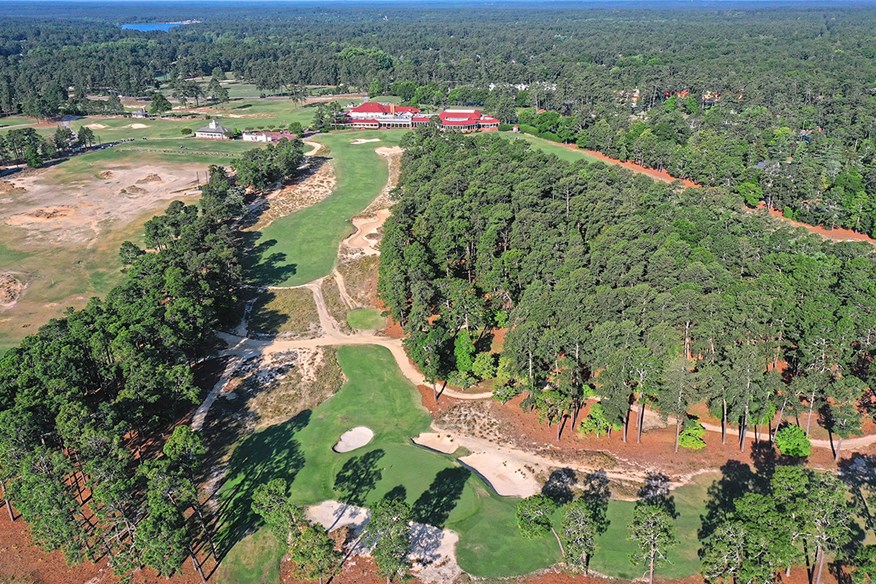
THERE IS NO ROUGH
This is no joke. When Bill Coore and Ben Crenshaw led a $2.5 million restoration of the course ahead of the 2014 US Open, they used aerial photographs from 1943 to remove 35 acres of turf and restore the course to Donald Ross’ original design and intent. They eliminated the rough, replacing it with sandy scrub, and restored some of the strategic angles that had been forgotten about with the move towards single-file fairways.
“It was a huge departure from the set-up of No.2 in 2005, but to be perfectly candid, I didn’t recognize the course that I played growing up,” says Coore. “In 2005, the tournament was dictated by four-inch deep Bermuda rough that lined the side of all the fairways. Now, it is almost the exact opposite. There is no rough. It just goes from fairway to hardpan sand and pine straw.”

THE FAIRWAYS ARE WIDE
You’d think this would be a good thing, but there’s far more to it than simply bashing a drive down the center. The wider fairways have changed the strategy of the course quite a lot, says Bob Farren, Director of Golf Course Management at Pinehurst. “In 2005, the fairways were all 27 yards wide and players had no choice but to try and hit the center. Now, they are up to 51 yards wide, so players need to choose which side of the fairway will give them the best angle to attack that day’s hole location.”
“The 2nd hole is a brilliant example,” says Jeff Hall, Managing Director of Rules and Open Championships at the USGA. “It’s a 500-yard, par 4, and in some places the fairway is 40 yards wide, but you really need to be on the left side of that fairway – which is where the fairway bunkers are – to leave the best angle to the green. I’ve described it in a few instances as a very anxious 300-yard walk, because you can’t afford to be out of position on it, or indeed on any hole at Pinehurst. Donald Ross wrote that Pinehurst No.2 is wide, but it is strategically wide. That’s the difference.”
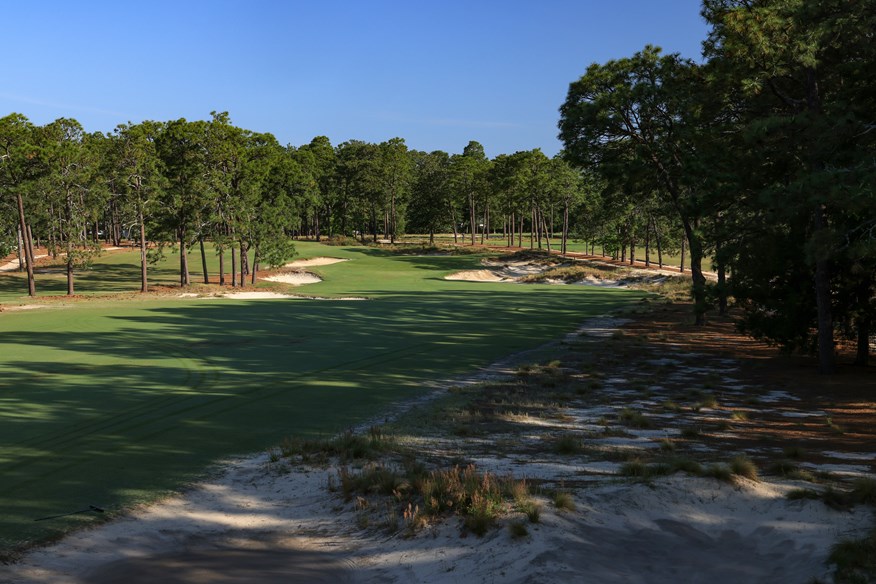
THE GREENS ARE FAMOUSLY ELUSIVE
There’s a reason Johnny Miller once described the greens as like “trying to hit a ball on top of a VW Beetle”. “There’s maybe a third or half of the green that is actually a playable surface,” says Justin Rose. “It’s a little bit like Augusta in that sense, in that you’re playing to zones, rather than just going at the pins or trying to hit greens.”
Jack Nicklaus and Bill Coore are in agreement and reckon these are the toughest set of greens in golf because of the sharp edges and run-offs. Miss them and the ball is likely to roll away into a short-sided collection area that is shaved only slightly longer than the putting surfaces themselves.
“There’s an old saying around Pinehurst that you don’t really count the number of greens you hit, you count the number of greens you visited,” says Coore, laughing. “Even if a green is, say, 6,000 sq ft, the actual useable part of it is not much more than half that. And seldom is there ever a contour that kicks the ball back toward the green.
“Most times the ball is working its way towards the edges, which are crowned and rounded. I recall talking to Don Padgett [II], who was then President of Pinehurst, and he said, ‘We could let Phil Mickelson drop a ball 150 yards from every green and he would have a hard time shooting under par.’ That pretty much tells you how tough it is.”

CHIPPING CAN BE COMPLICATED
“The big difference at Pinehurst, compared to other US Opens, is that you are not going to find the ball two inches off the green in five inches of rough,” says Hall, who will take the lead on set-up for the Championship. “Anything that misses the putting surface is going to keep running away because of the closely mown turf. And once it comes to rest, there are a variety of options that the player is going to have. All of a sudden, it creates choices and creates indecision.”
In 1999 and 2005, Payne Stewart (right) and Michael Campbell missed 31 of 72 greens during the week of their victory, but won the short game contest around Pinehurst’s turtle-backed torture chamber. Stewart later admitted that he practiced chipping with nine different clubs, from 3-iron to lob wedge, in preparation for Pinehurst’s links-like challenges.
“With all of these run-offs and the little swales and tight lies, you have got so many different ways to play,” says Rory McIlroy. “You can bump-and-run or you can putt it, or you can fly it on the putting surface. It brings into play imagination, creativity, hitting different shots out of different lies. Guys are going to have to maybe come up with shots that they’re not so comfortable playing and shots they really don’t play much week in and week out, but that’s the beauty of this golf course.” Indeed, it’s just the kind of golf Donald Ross envisioned.
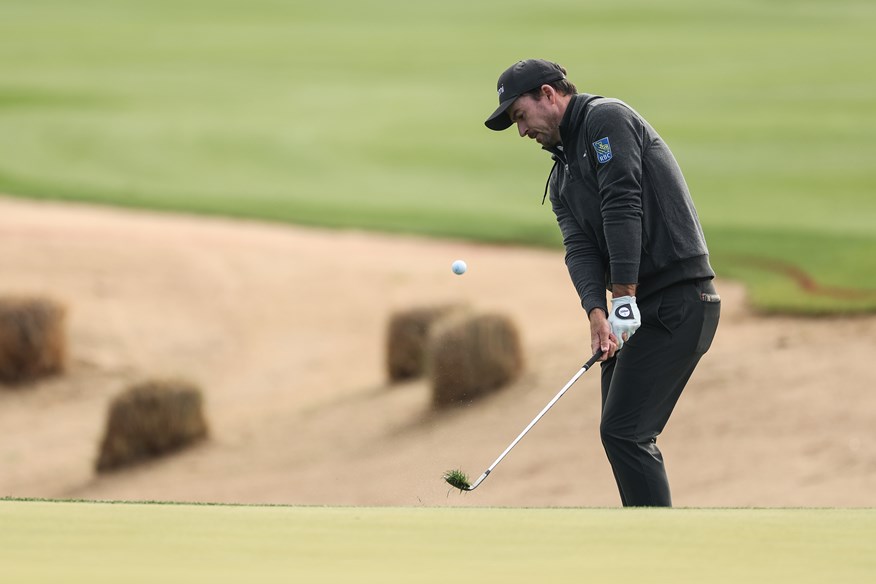
SCORING CAN BE BRUTAL
Martin Kaymer was probably being honest when he predicted that the winning score in 2014 would be eight-over-par, a full 17 shots fewer than he managed as the runaway champion that year. Only two other players finished the week in the red, with the average score standing at three strokes over par. “You don’t hear many roars at Pinehurst,” admits Tiger Woods. “But that’s the nature of the course. At Augusta, you hear eagle roars and you hear big putts being made. But who is going to hole out from off the side of one of these greens? Guys are just trying to make par.”
THE PAR 3s ARE TO BE FEARED
On a lot of courses, the shorter holes offer the most respite. Not so at Pinehurst No.2. “Some of the par 3s are very difficult,” concedes Jason Day. “You’re coming into a green where the slope is very severe at the front, but you’re trying to land it just on the front edge. Then, if you land it short, it’s going to roll back down. Land it too far, it’s going over the back of the green. Distance control is huge.”
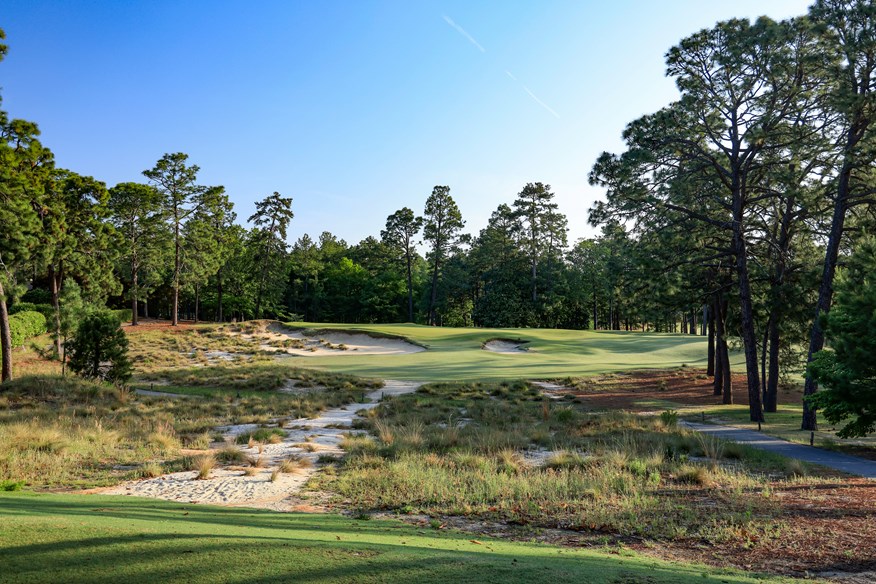
THE NATIVE AREAS WILL CATCH A LOT OF PLAYERS OUT
“The wire grass that lies alongside our fairways introduces an unknown that a lot of the players are not going to like,” says Farren. “At most US Opens, they know that if they miss the fairway, they are going to be hacking out of three or four-inch rough. Here, when their ball runs off the fairway, they could get a perfect lie or they could find themselves nestled in a footprint or against some wire grass.
“I can’t imagine people playing 72 holes and not having to take a drop or chop out sideways at least once or twice. So, I think the players who will rise to the top of the leaderboard will be the ones who can stay patient, take their medicine, and appreciate that bad lies are going to happen to everybody.”
SUBSCRIBE TO TODAY’S GOLFER: Print and Digital access, discounts and rewards!
